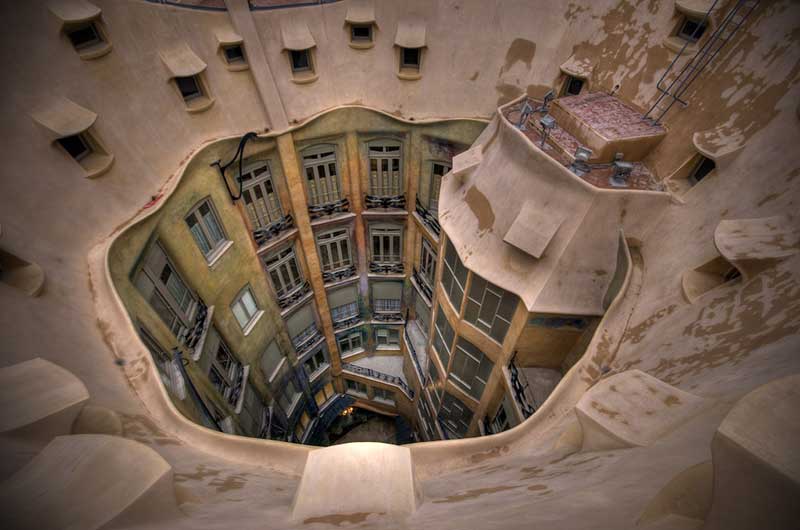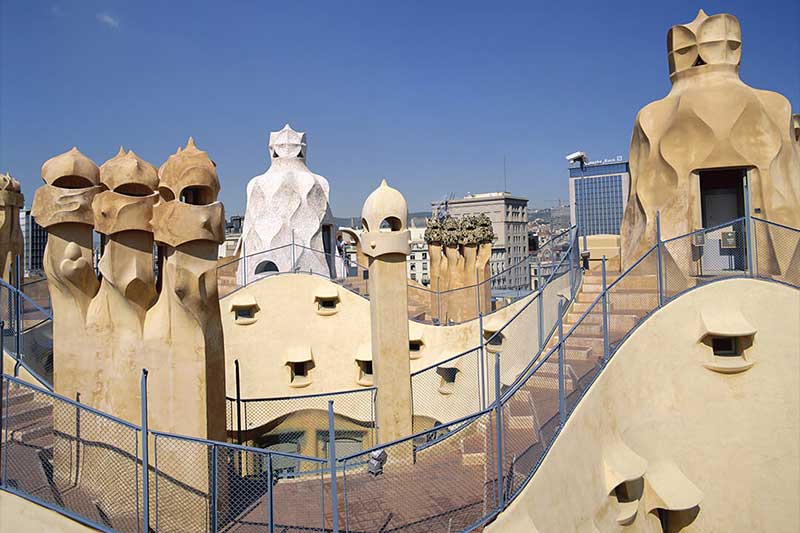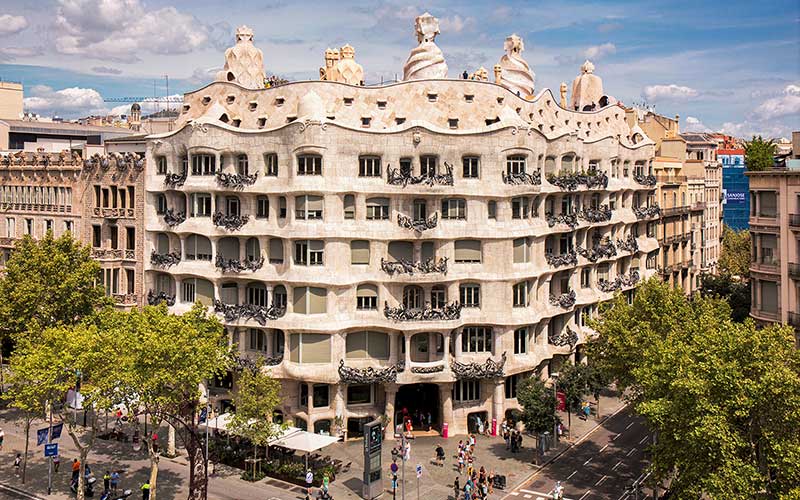Casa Mila, also known as La Pedrera, is an architectural masterpiece located in the heart of Barcelona, Spain. Designed by the renowned Catalan architect Antoni Gaudí, it stands as a testament to his visionary genius and represents a significant chapter in the rich history of modern architecture ozinsight.
Introduction
When one thinks of Barcelona’s iconic landmarks, the towering spires of the Sagrada Familia and the vibrant colors of Park Güell often come to mind. However, Casa Mila, with its undulating façade and unique rooftop terrace, deserves a place among these marvels. This article delves into the captivating story behind Casa Mila and explores the elements that make it a truly exceptional architectural gem.
Architectural Marvel: Antoni Gaudí
Early Life and Influences
Antoni Gaudí was born in 1852 in the Catalan region of Spain. His childhood in Reus and his later studies in Barcelona laid the foundation for his exceptional career. Gaudí drew inspiration from nature, incorporating organic forms and elements into his designs. His love for Catalonia and its distinctive culture also played a significant role in shaping his architectural style.
Gaudí’s Unique Style
Gaudí’s architecture is characterized by a fusion of natural forms, intricate details, and innovative structural techniques. He believed in the harmony between architecture and the natural environment, often integrating buildings seamlessly into their surroundings. Casa Mila showcases his signature style, which blends functionality with aesthetics and captivates the imagination of all who encounter it.

Casa Mila: The Inspiration
Construction and Purpose
Casa Mila was built between 1906 and 1912 as a residential building for the wealthy Milà family. Pere Milà i Camps, a successful industrialist, commissioned Gaudí to design a modern and luxurious residence that would become a symbol of status and refinement. The building’s construction posed several engineering challenges due to its unconventional design, but Gaudí’s vision ultimately prevailed.
The Milà Family
The Milà family, who gave the building its name, were prominent members of Barcelona’s high society. They resided in Casa Mila until the mid-20th century when it was sold and converted into apartments and offices. The Milà family’s connection to the building adds another layer of intrigue to its history and enhances its cultural significance.
The Facade of Casa Mila
Organic Shapes and Sculptural Elements
One of the most striking features of Casa Mila is its undulating façade, which resembles the waves of the sea. Gaudí employed innovative construction techniques and used limestone blocks to create a visually stunning texture. The façade is adorned with balconies and windows that follow the sinuous lines of the building, demonstrating Gaudí’s meticulous attention to detail.
Symbolism in the Design
Gaudí’s architectural language often contains symbolic references. Casa Mila’s façade incorporates elements representing marine life, such as the wrought iron balcony railings resembling seaweed and the sculptural balconies shaped like masks. These symbolic motifs add depth and intrigue to the building’s design, inviting interpretation and fostering a sense of wonder.
Rooftop Terrace: A World of Chimneys
Unconventional Chimney Design
The rooftop terrace of Casa Mila is a mesmerizing space that transports visitors into a whimsical world. Gaudí’s imagination shines through in the unconventional design of the chimneys, which resemble mystical beings or knights in armor. These chimney sculptures not only serve their functional purpose but also contribute to the artistic and fantastical ambiance of the building.
Panoramic Views of Barcelona
From the rooftop terrace, visitors can marvel at panoramic views of Barcelona. The terrace offers a breathtaking vantage point to admire the city’s skyline, from the majestic Sagrada Familia to the shimmering Mediterranean Sea. It is a place where one can appreciate Gaudí’s intention to harmonize architecture with the surrounding urban landscape.

The Interior Spaces
La Pedrera Apartment
Casa Mila’s interior spaces are as captivating as its exterior. The highlight of the interior is the recreated La Pedrera Apartment, which showcases the lifestyle of Barcelona’s bourgeois society during the early 20th century. Visitors can explore the beautifully furnished rooms, marvel at the ornate ceilings, and gain insight into the period’s architectural and design trends.
The Courtyards and Lightwells
Casa Mila features inner courtyards and lightwells that not only serve as sources of natural light and ventilation but also create a sense of tranquility within the bustling city. Gaudí’s mastery of light and shadow is evident in these spaces, providing a serene and harmonious atmosphere for residents and visitors alike.

Casa Mila Today: Cultural Center
Gaudí Exhibition and Architectural Heritage
Casa Mila stands as a living testament to Gaudí’s visionary legacy. Today, it serves as a cultural center that celebrates Gaudí’s life and work. The building houses a Gaudí Exhibition, where visitors can delve into the architect’s creative process and gain a deeper understanding of his innovative approach to architecture. Casa Mila’s status as a UNESCO World Heritage Site further underscores its significance.
Cultural Events and Performances
In addition to its architectural allure, Casa Mila hosts a variety of cultural events and performances. From concerts and art exhibitions to lectures and workshops, the building remains a vibrant hub of artistic expression. Its versatile spaces, such as the underground Espai Gaudí, provide a unique backdrop for these cultural endeavors, fostering a dynamic and engaging atmosphere.
The Influence of Casa Mila
Modern Architecture and Organic Design
Casa Mila’s influence extends far beyond its physical boundaries. Gaudí’s innovative design concepts, such as the integration of organic forms and the symbiosis between architecture and nature, continue to inspire contemporary architects worldwide. Casa Mila serves as a touchstone for those seeking to create harmonious, sustainable, and visually striking buildings.
UNESCO World Heritage Site
Recognizing its exceptional universal value, Casa Mila was designated a UNESCO World Heritage Site in 1984. This prestigious acknowledgment ensures the preservation and protection of the building for future generations. Casa Mila’s inclusion on this esteemed list cements its place among humanity’s cultural and architectural treasures.
Conclusion
Casa Mila, with its awe-inspiring design, rich history, and cultural significance, stands as a testament to Antoni Gaudí’s brilliance. From its undulating façade and whimsical rooftop terrace to its captivating interior spaces, Casa Mila captivates the imagination and offers a glimpse into the extraordinary mind of one of history’s greatest architects. Visiting Casa Mila is not just an architectural pilgrimage but a journey into the heart of Barcelona’s vibrant cultural tapestry.
FAQs
Can I visit the rooftop terrace of Casa Mila?
Yes, visitors can access the rooftop terrace of Casa Mila and enjoy panoramic views of Barcelona.
Are there guided tours available at Casa Mila?
Yes, guided tours are available at Casa Mila, providing valuable insights into the history and architecture of the building.
Can I explore the interior spaces of Casa Mila?
Absolutely! Visitors can explore the interior spaces, including the La Pedrera Apartment, and gain a deeper understanding of the period’s architectural and design trends.
Is Casa Mila open to the public year-round?
Yes, Casa Mila is open to the public throughout the year, allowing visitors to experience its architectural grandeur regardless of the season.
How long does a typical visit to Casa Mila last?
A typical visit to Casa Mila can last anywhere from one to two hours, depending on the level of exploration and engagement with the exhibits and spaces.













Got a Questions?
Find us on Socials or Contact us and we’ll get back to you as soon as possible.